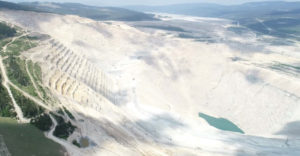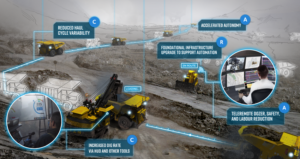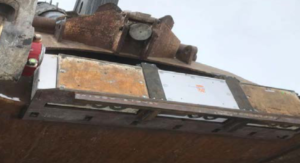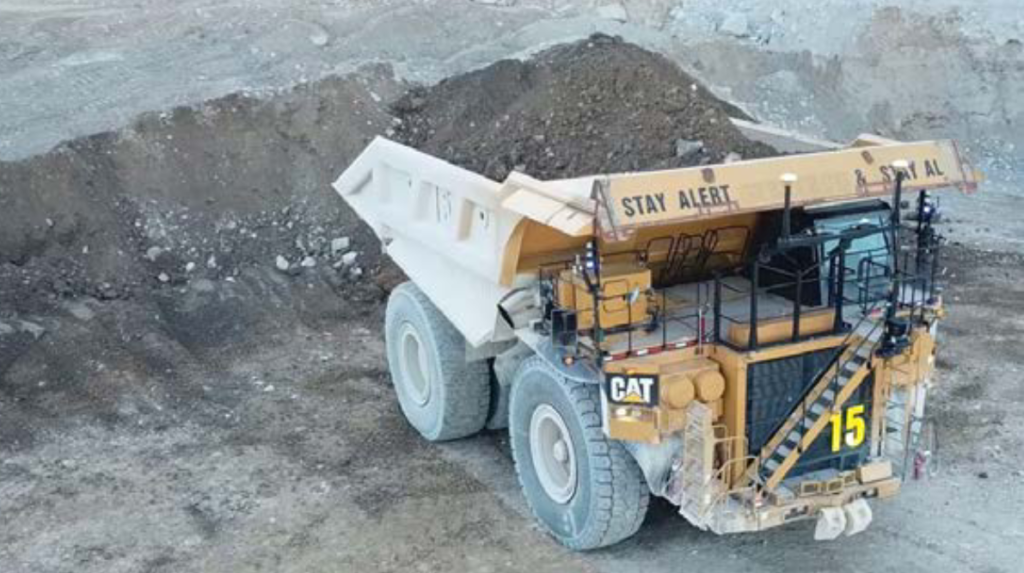The ongoing autonomous pilot project using Caterpillar trucks at Highland Valley Copper (HVC) in British Columbia, owner Teck Resources told IM “has progressed well in terms of safety, increased productivity and cost reductions, which is needed to enhance the feasibility of extending HVC’s mine life to 2040.”
Originally, six new 793F CMD autonomous trucks were put into operation, then three more new trucks were added in 2019 bringing the total to 9, and in 2020 the fleet has again been expanded to 13, with HVC targeting a further increase before the end of 2020. By July 2020, the fleet had already safely hauled 207,000 loads, driven 920,000 km and moved 47.7 Mt. This project is notable as it was the first AHS project worldwide involving a deep, steep sided pit in a cold climate.

Elsewhere, there is a six-truck AHS pilot using Komatsu 930E trucks underway at the Elkview Operations so Teck can assess the use of AHS at its steelmaking coal operations. Komatsu is already well established in Canada with its AHS programme through its growing fleet at Suncor’s oil sands operations. In addition, Teck plans to implement Caterpillar’s 794AC AHS kits to enable autonomous haulage at its Quebrada Blanca Phase 2 copper mining operations currently under construction in Chile.
This is all part of Teck’s RACE21™ innovation-driven transformation program with an annualised EBITDA improvement target of C$500 million by the end of 2020, however, Teck’s ability to achieve its targets on its planned timeline is uncertain because it will be impacted by the duration and severity of the COVID-19 pandemic. Teck says it will provide an update on timing in its third quarter reporting.
There are four pillars to RACE21 which were outlined by Andrew Milner, Teck Senior Vice President, Innovation and Technology, in an interview last year. The first pillar is Renew: looking at foundational infrastructure, systems and processes, and what needs to be done to position Teck to be world class in that space, so it can support a future operating state. The second is Automate: looking at company-wide automation opportunities for robotics, processes and equipment. The third pillar is Connect: looking at how it leverages data so it can be treated like any other high-value asset to lower variability across the full value chain. And the fourth pillar is Empower: the collective impact “Renew”, “Automate” and “Connect” of looking at how Teck works, what skills it needs and how it can truly enable its people to meet these new opportunities.

So, RACE21 includes a wide range of projects but core areas include unifying and modernising Teck’s core systems across its mines and establishing a technology foundation that facilitates deployment of Connect and Automate reliably and at scale. For example: wireless site infrastructure to support automation, sensing, site communications, information access, pit-to-port integration and advanced analytics as well as accelerating and scaling up the autonomy program. Other key aims are a transformational shift in safety, reducing per-tonne mining costs with smaller fleets and providing innovation platforms to enable implementation of advanced analytics to drive cycle time improvement & predictive maintenance.

Part of RACE21 is also working with OEMs through the ICMM to develop zero-GHG surface mining vehicles. Another RACE21 initiative is shovel-based sensor based ore-sorting where Teck has taken a leading role by pioneering the development and implementation of MineSense for dynamic ore sorting. As of last year it had been installed on three rope shovels using the 2nd generation ShovelSense“SX2”System. Availability increased after adopting a maintenance strategy with early results delivering good value and full ramp-up ongoing in 2020. Teck has also been updating copper algorithms to recognise different mineral assemblages while continuing with reliability and maintenance strategy work.












